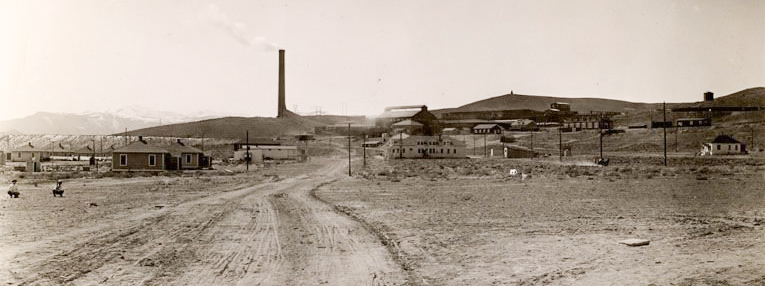
(Photo credit: University of Nevada)
With the mining boom in Mason and Smith Valleys, a smelter was needed to process copper ore. The location was selected at the north end of Mason Valley to the east of the Sigatse Range.
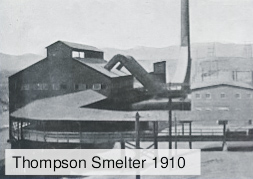
Mason Valley Mines Company began construction in 1910. The first smelter went online in 1912 and could process 700-1000 tons of copper ore per day. A second 500 ton smelter was constructed in 1913-14.

The smelter was named in honor of co-owner, William B. Thompson.
(Photo credit: Wipipedia)
The small town of Thompson was developed to house smelter workers. Originally the town consisted of two blocks of houses. It later grew to contain 350 residents and several blocks of stores, homes, saloons and mechanics shop. A post office was open from June 28, 2911 to June 30, 1920.

(Photo credit: University of Nevada)
Thompson was connected to the mines by railroads. The Carson and Colorado Railway connected Thompson to Wabuska several miles to the south. The Nevada Copper Belt Railroad then connected Wubuska to the Nevada-Douglas Copper Company mine which extended to Ludwig on the west side of the Sigatse Range.
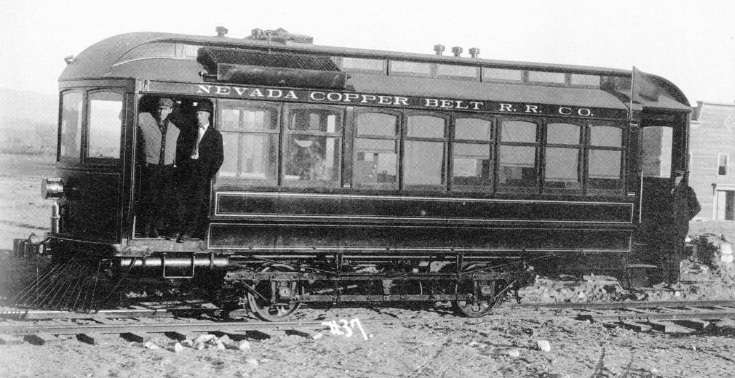
(Photo credit: Nevadagram)
Starting in 1911, the Nevada Copper Belt Railroad transported 1,000 tons of copper ore per day from Ludwig to Thompson via beautiful Wilson Canyon. On the return trip the railway carried supplies to the towns of Ludwig, Delphi and Hudson. In 1925 the railroad went into default but it continued to operate until 1929.
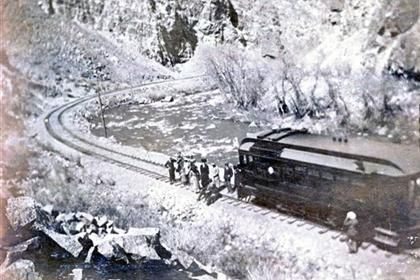
Wilson Canyon Nevada Copper Belt Railraod
(Photo credit: Yerington Mondays)
Cooper mining in Ludwig decreased and the Thompson Smelter closed in 1914. The smelters reopened 1917-1919. One smelter was brought back online for the final time in 1926. It was closed in 1928 and dismantled.
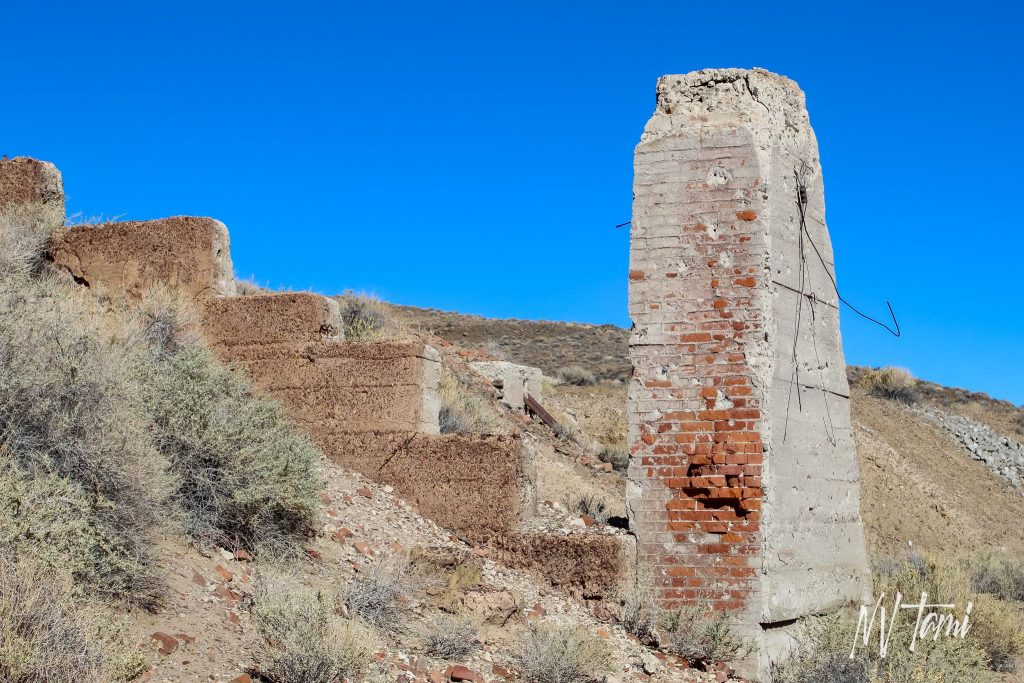
Today the remains of the Thompson smelter silently watch over Mason Valley. Foundations, concrete pillars and slag are all that remain.
Any trace of the town of Thompson has faded into the desert. Now only a flat depression denotes where people once lived.
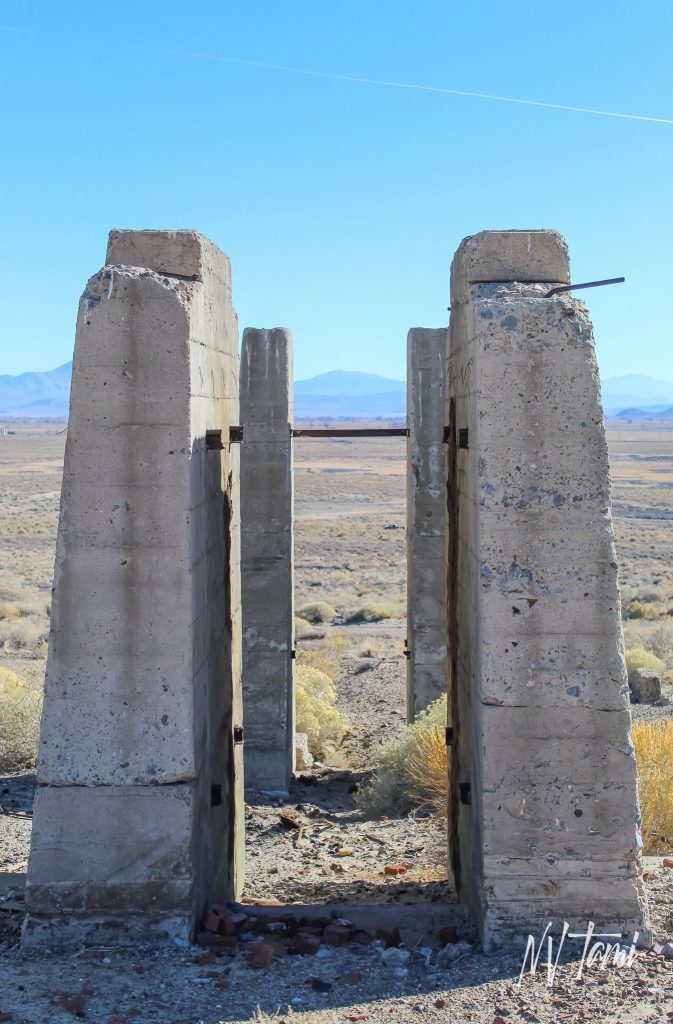
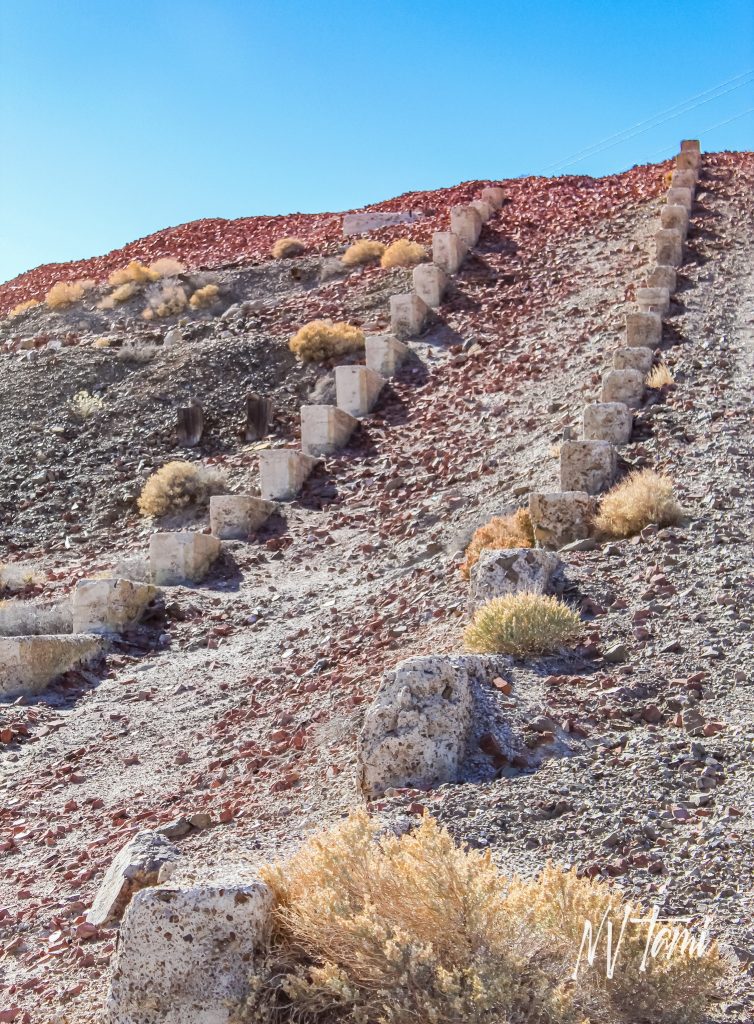
Stairs foundations led to the smelter chimney
Smelting is the process of purifying metals from it’s ore. Heat and chemical reactions are used to extract the metal leaving behind slag, which is the composite of materials removed.
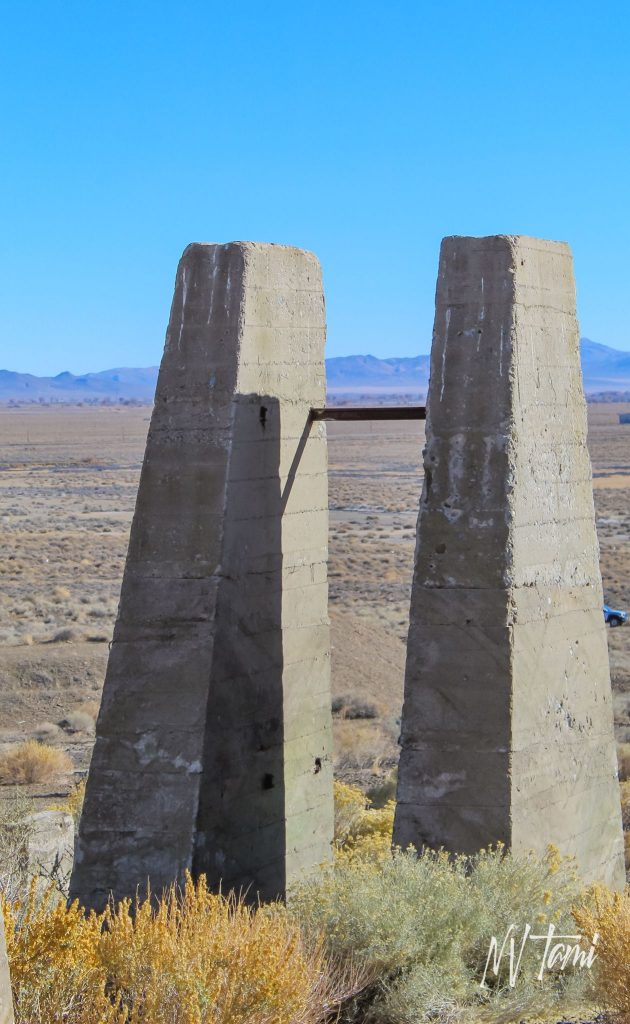
We combined our visit to Thompson with Fort Churchill, Buckland’s Station and Wabuska. Desert and Hooten Well Pony Express Stations would also make a nice day.
Visited 11-12-2018
References
- Forgotten Nevada: Thompson Smelter
- Massey et al. Nevada Trails: Western Region. APC Publishing, 2016. Pages 194-203.
- Nevada Expeditions: Thompson
- Paher, Stanley. Nevada Ghost Towns and Mining Camps. Nevada Publications, 1970. Page 79-81.
- Yerington Mondays: The Mines of Lyon County: Blue Jay Mine, Bluestone Mine & Thompson Smelter
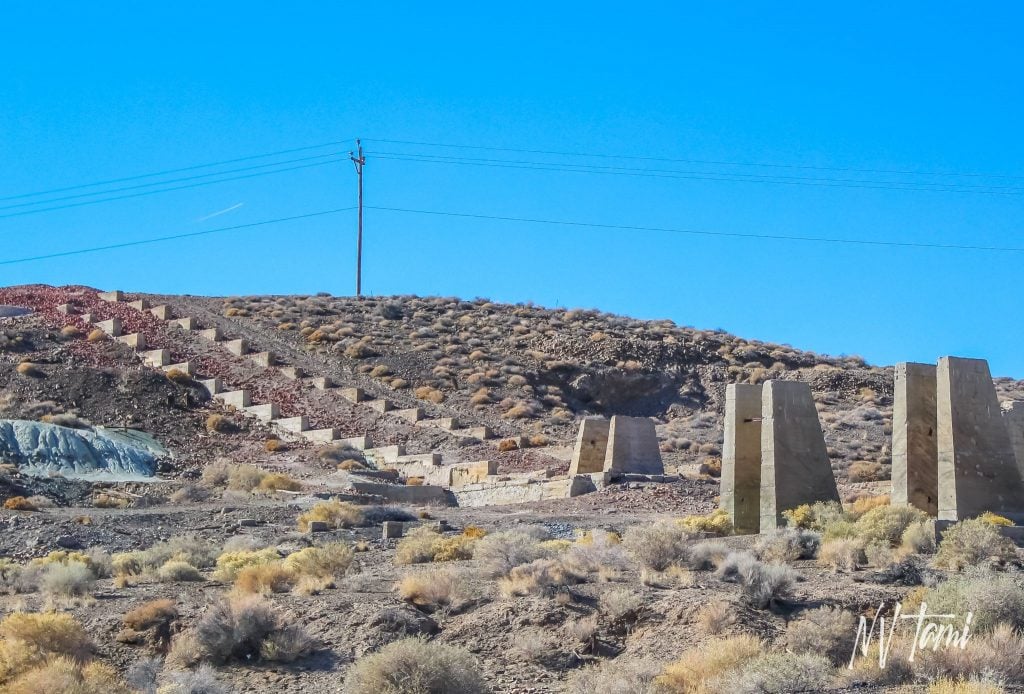



Leave a Reply